Building a Creative Flywheel: A Guide to Maintaining Consistent Growth With CGC, UGC, and IGC
.avif)
At Kynship, we never have to worry about ramping up creative production because we’re usually backlogged.
You read that right.
We have three creative pipelines that help our clients build their creative flywheel — in addition to the branded content that our clients are already creating. They are:
1. Customer generated content
2. Seeded content from influencers
3. User generated content
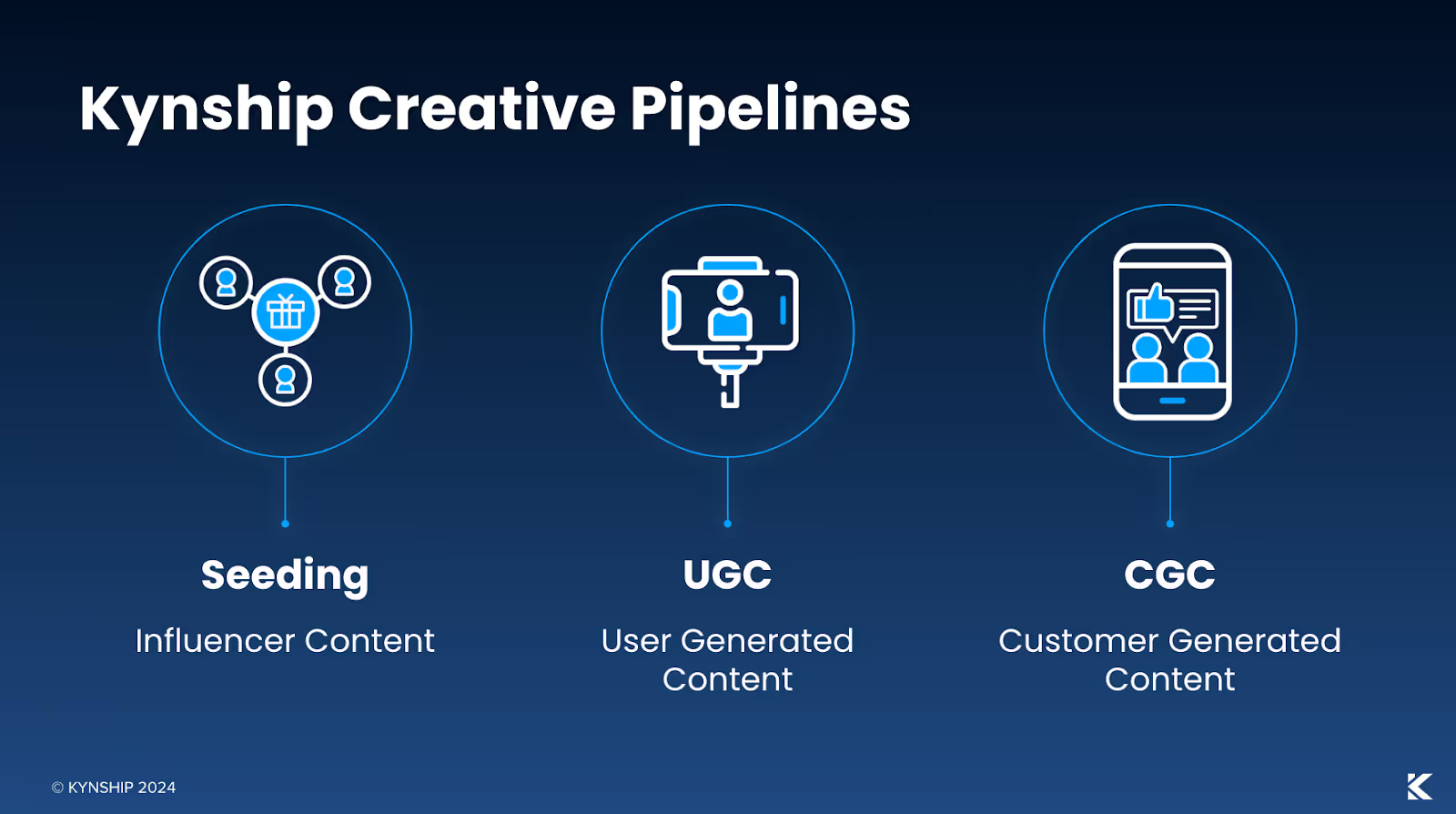
In this article, I’ll explain how we maintain a steady stream of creatives at Kynship and how you can, too.
But before we get into the nitty-gritty, you might be wondering why you need to build a diverse range of creative libraries in the first place.
3 Reasons Why You Should Focus On Building a Diverse Creative Pipeline
There are three reasons why you should focus on building a diverse creative pipeline:
1. Meta doesn’t like duplicative content
2. Creative volume eliminates Meta’s algorithmic issues
3. Human-forward content often outperforms branded content
Let’s dive deep into understanding each reason.
1: Meta doesn’t like duplicative content
Can’t you just make minor tweaks to your branded content to scale creative production and call it a day?
No, you can’t.
Here’s the thing: Slight deviations aren’t brand new creatives. Let’s say you have three ads:
- Ad A: product image, left aligned, blue background
- Ad B: product image, left aligned, red background
- Ad C: product image, left aligned, new text overlay
Yes, the above three ads are different, but they aren’t diverse. Meta sees this as duplicative content. And it doesn’t want to serve duplicative content to its users.
Result: You hurt your campaign performance and are unable to hit CPA targets.
Your ad creatives need to pass the eyeball test. If you zoom out and look at the big picture, do your ads look different or diverse?
Take these two ads. Yes, they’re technically different because the products have different colors. But they’re fundamentally the same in style and messaging.
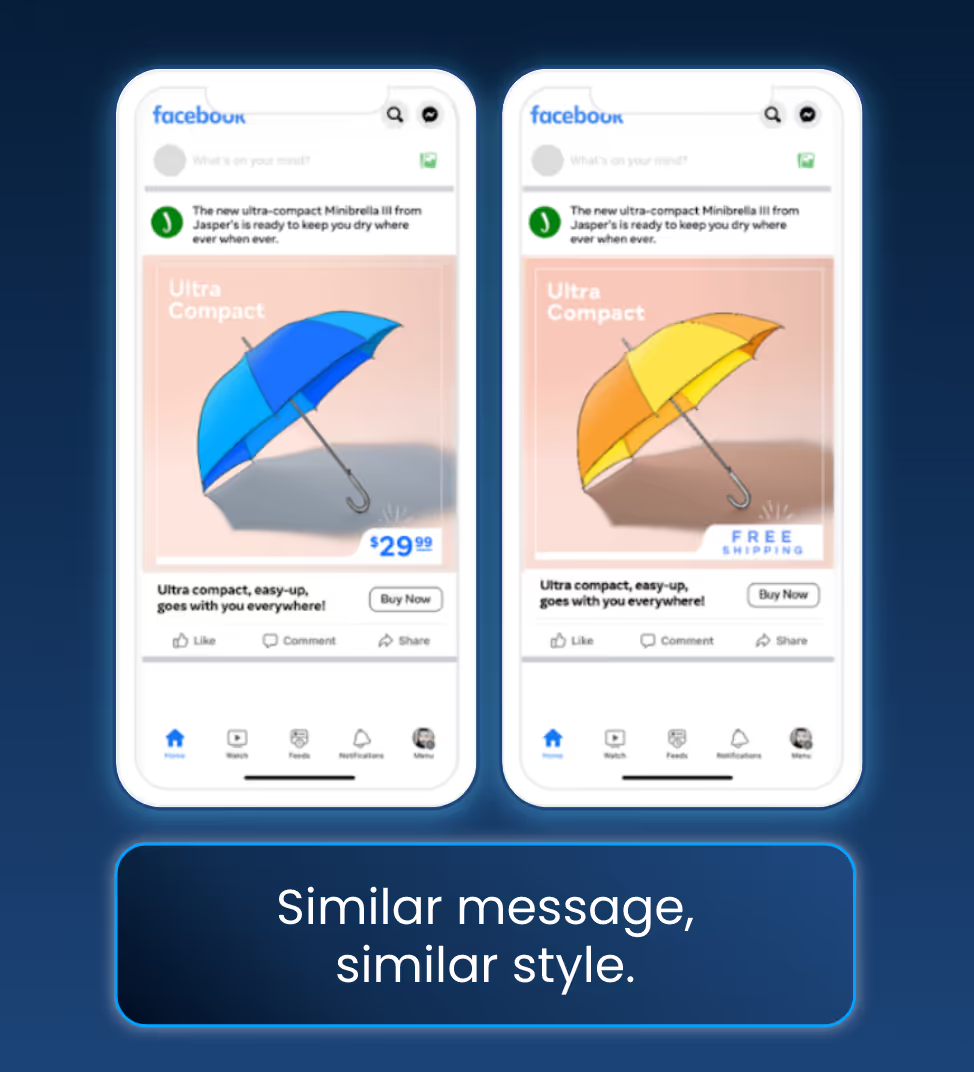
On the other hand, these two ads have different messaging and styles. They pass the eyeball test — there’s no disputing that they are diverse.

Meta considers anything less than diverse duplicative. And this puts a glass ceiling on your ad performance. With a mix of CGC, UGC, seeded content, and branded content, you have a lot of variety in your ad creatives.
2: Creative volume eliminates Meta’s algorithmic issues
There’s no denying that Meta is an imperfect platform. But if you feed it a large volume of creatives with billions of data points, you automatically solve many of its algorithmic issues. More creatives will mean more testing which will translate to more growth.
Not just this: Creative volume also helps you test different styles and messaging to understand what gives you the most ROI. By testing at scale, you can reliably find your top performing creatives and double down on them.
When you have a large scale of creatives with varying styles and messaging at your disposal, you don’t have to do the (inaccurate) work of “picking” the creative you think will perform. You can just feed Meta everything and let it do its magic.
💡 Worried about burning your budget while testing creatives at scale? Use our cost controls strategy to get the most bang for your buck.
The problem? Creative volume is hard to achieve with branded content alone. It’s challenging, costly, and time-intensive to produce.
The solution: Mix branded content with UGC, seeded content, and CGC. This way, you essentially let go of the reins and outsource content production.
- CGC is real people sharing real stories about your brand which equals unbeatable social proof and engagement.
- Seeding is the authentic content you can get from influencers following our seeding process.
- UGC is about finding and paying creators who align well with your brand and products to produce engaging content for your creative strategy.
These kinds of content are easier to produce and scale. Seeding content can generate about 150 assets in about 4-6 weeks — if you follow Kynship's processes. UGC and CGC can certainly achieve this as well.
3. Human-forward content often outperforms branded content
Brand-only creative is effective. But some of our clients' best ads have been front camera, off-the-rip videos. Production value guarantees nothing. Yes, every brand is different, but don’t limit yourself to "on brand" creatives only.
Branded content also feels like an ad. Consumers can sense the broadcasted message and can get defensive against your message. In contrast to this, human-forward content like CGC, UGC, and seeded content feels more authentic and engaging.
Not to mention: Branded creatives can get stale — which lowers engagement rate and brand recall. But with human-forward content, you get a wide net of messaging angles. Each customer or creator you choose has a unique content style, perspective, and audience. Low key production can often lead to high key results.
Note: We've consistently seen human-forward creative outperform brand-only creative, but that doesn't mean brand creative never works. The ultimate goal is to always test it all.
💡 Want to learn more about how to do creative testing effectively? Read how we practice creative testing for our clients at Kynship.
Now that we’ve established why you need creative diversity (and volume!), let’s dive deeper into each of the elements in our creative pipeline and how to get them.
How to Receive Customer-Generated Content (CGC)
Customer-generated content is created by your loyal customers. Ideally, these are buyers who have been purchasing from you for more than two months.
The goal is to get customers to share their genuine experiences with your brand. Take this ad created by one of Ponyback’s customers. The buyer speaks in an informal tone, off-the-cuff about their true views of the product.
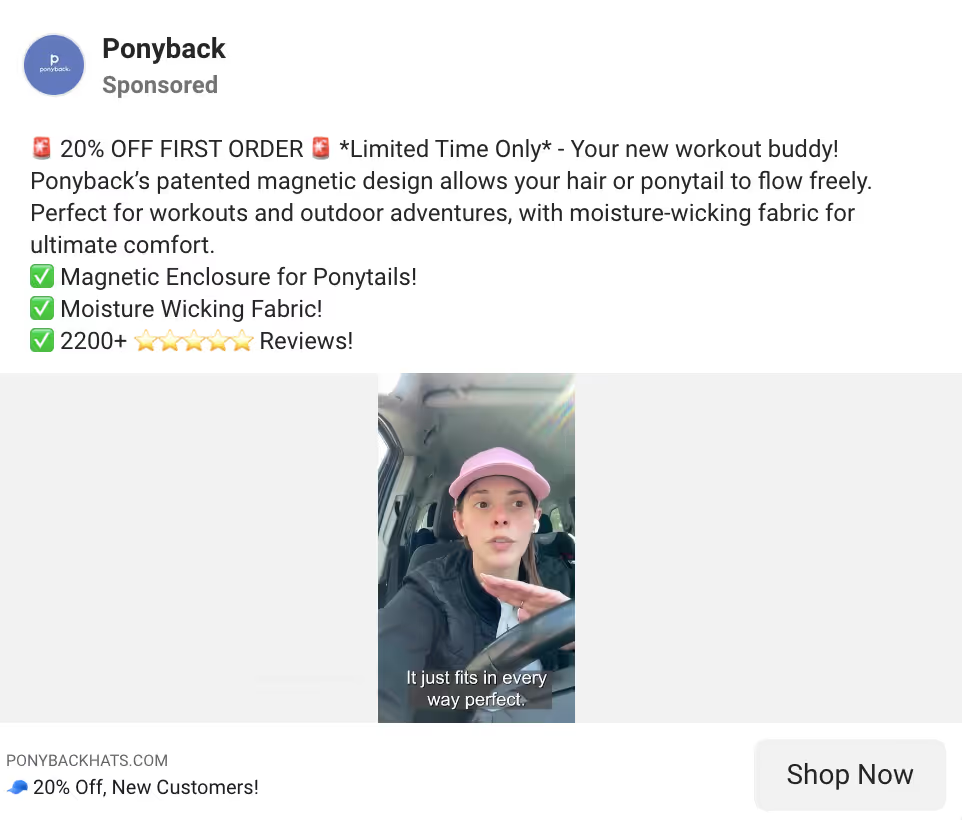
How can you get your customers to record such videos for you? Some buyers who love your brand might do this for free! You can also add incentives — like store credit or free products — for repeat buyers to make it worth their while.
One pro tip: Make it as easy as possible to contribute. Send your customers specific questions they should speak about and examples of what you’re looking for. Encourage them to be as raw & authentic as possible. Minimize the work needed on their end to increase the success rate.
And, of course, don’t forget to thank your customers for taking out the time to do this!
On the note of minimizing your customer’s work…
👉 Download our (free!) email and SMS flow that you can embed in Klaviyo to generate CGC.
How to Scale Seeded Content
At Kynship, we practice product seeding — we send products to targeted influencers for free, as a gift, no strings attached. This starts off the influencer-brand relationship in a welcoming and authentic way. And since seeding isn’t transactional, IGC results in organic, genuine content.
Of every 500 creators we contact, about 100 respond, and 30 create content with the product. Then it’s about tracking the organic posts from influencers, asking for usage rights, and running the content as an ad.
This ad from a creator who was gifted Black Girl Vitamins’ products is an excellent example to show how authentic seeding content feels. The video is full of personality and a unique perspective unique to the influencer.

Using seeding content, Black Girl Vitamins’ ad account scaled up by 38% within three months. And IGC yielded nCPA 20% lower compared to brand content.
The best part with IGC is you get tons of unique creative assets costing only your COGS. You can build a diverse and high-quality creative library without heavy upfront investment.
How to Build a Library of User-Generated Content (UGC)
User-generated content is the content created by seasoned content creators for your brand. You need to source these creators from platforms like Instagram and TikTok and vet whether or not they’re a good brand fit.
This ad by a UGC creator for Frog Fuel is the perfect example of a UGC ad. The creator highlights all the crucial selling points of the brand and presents them in a relatable context.
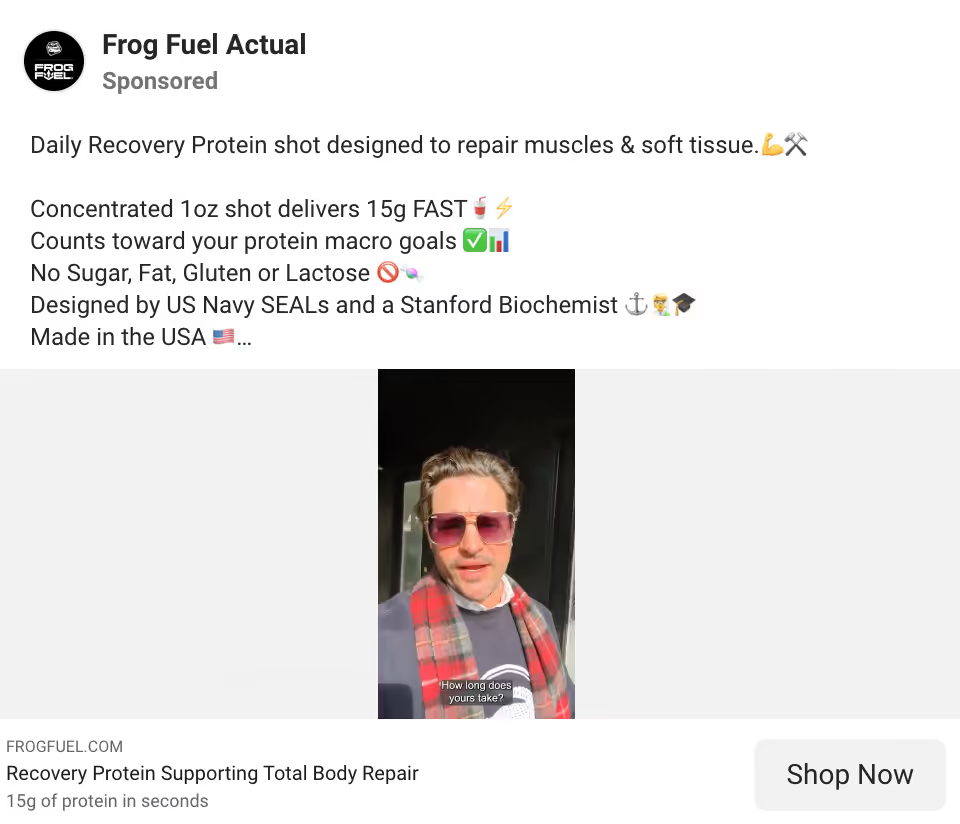
For UGC ads, you also need to provide a content brief to provide structure and ideas to your creators. This helps ensure you get creatives that align with your goals and vision. In your brief include guidelines such as:
- Regulatory guidelines: Include the things you don’t want to mention or scenes you’d like to avoid.
- Filming guidelines: If you have any specific requirements (like turning off HDR), include them.
- General guidelines: Include a list of best practices like shooting in good lighting, how to display your product clearly, ideal specs, etc.
- Talking points: Help creators brainstorm what to say by sharing a few things they could talk about in their content.
- Hooks: Ask creators to use different hooks before the main video so you can test them all in your ad account.
👉 Download our UGC brief template — including all of these pointers (and more!).
After you receive content from your UGC creators, you should also review it and provide feedback so they can work on it for next time.
For Supergut, we leveraged UGC & CGC with branded content to achieve a 635% increase in ad spend and a 799.53% jump in new customer revenue. Read their case study to see how to combine CGC and UGC to scale ad production effectively.
How to Build Your Creative Flywheel With Seeding, UGC, CGC, and Branded Content
The creative flywheel is made up of three parts: develop, deploy, and maintain. These three parts need to work in a cycle so you can build and scale your paid media results.
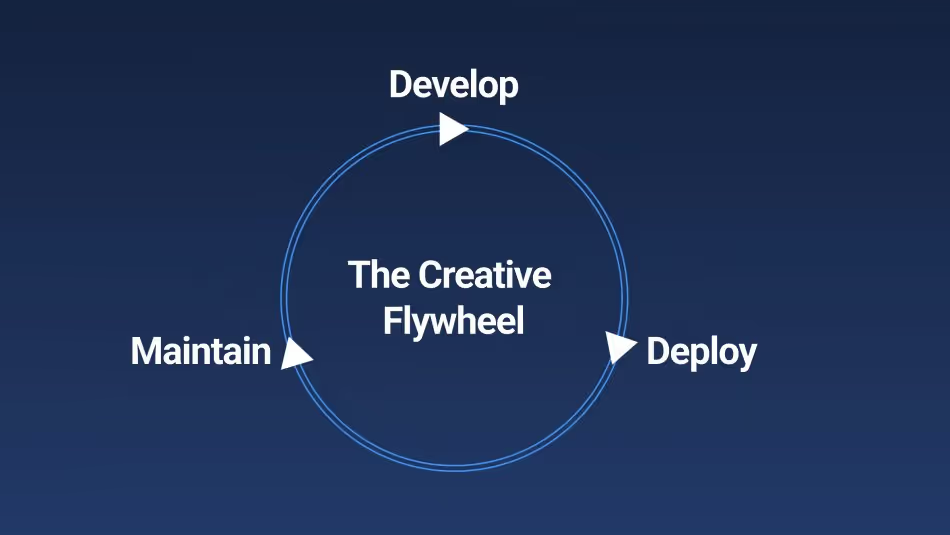
Step 1: Develop
At Kynship, we first begin by testing creatives that are already available. This is usually branded assets & UGC/CGC lying around.
Then, we start sourcing creative that will resonate with our client’s core audience. We do this by beginning product seeding and gathering IGC content. Simultaneously, we also roll out sourcing UGC content.
Then, we refine these assets based on what we’ve learned works best: styles, angles, etc.
Step 2: Deploy
Deploying is when we start publishing the non-repetitive, fresh, and cohesive ads gathered in step one. The goal here is to unlock new, differentiated audience pools and build variety into your targeting demographics.
This is also the step to analyze the ad performance data to know which styles, angles, and messaging work best for a client. The data we gather from testing also helps us create our thorough creative reports.
Step 3: Maintain
Maintaining is building a set of systems, processes, and workflows to keep the fresh stream of new creatives flowing in. This means continually reaching out to targeted influencers, sourcing excellent UGC creators from our database, and sending incentives to more and more customers.
We refresh ads on a minimum 2x/month basis, plugging in new assets and reworking any existing (but stagnant) creatives.
These three steps of the creative flywheel (combined with cost controls) have to work in synchrony to build a sustainable paid media strategy.
Creative volume and cost controls are our secret sauce for scaling brands faster than anyone else. While many think cost controls limit spend, they actually pave the way for greater scale, and when combined with creative volume, they unlock even more growth potential.
The Creative Flywheel: A Zoomed Out Version
The creative flywheel might appear like an overwhelming puzzle with tons of moving parts. Yes, there are a dozen micro-steps. But if you zoom out, the process is pretty simple.
Step 1: Source as much content as possible via seeding, CGC, and UGC
Step 2: Launch it all using cost controls
Step 3: Scale what works
The formula is straightforward: Speed x volume x variety = winning ad campaigns.
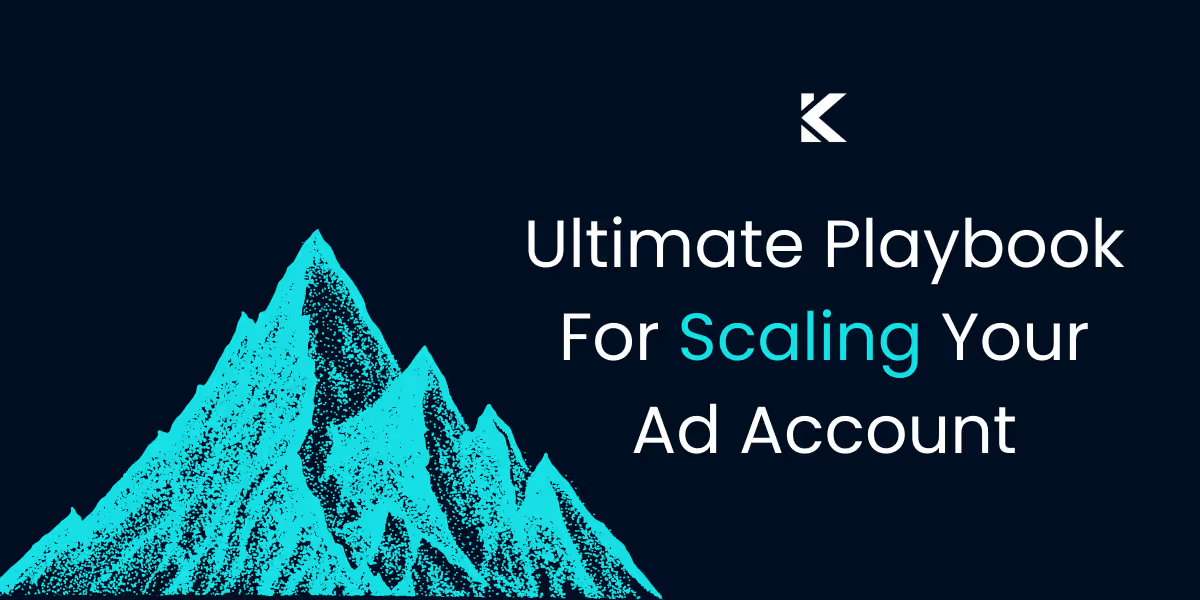
How to Identify and Scale Success in Your Meta Ad Account: The Complete Guide
Understand how you can identify and scale success in your ad account — using a mix of financial forecasting, CPRG, and diverse creative volume.
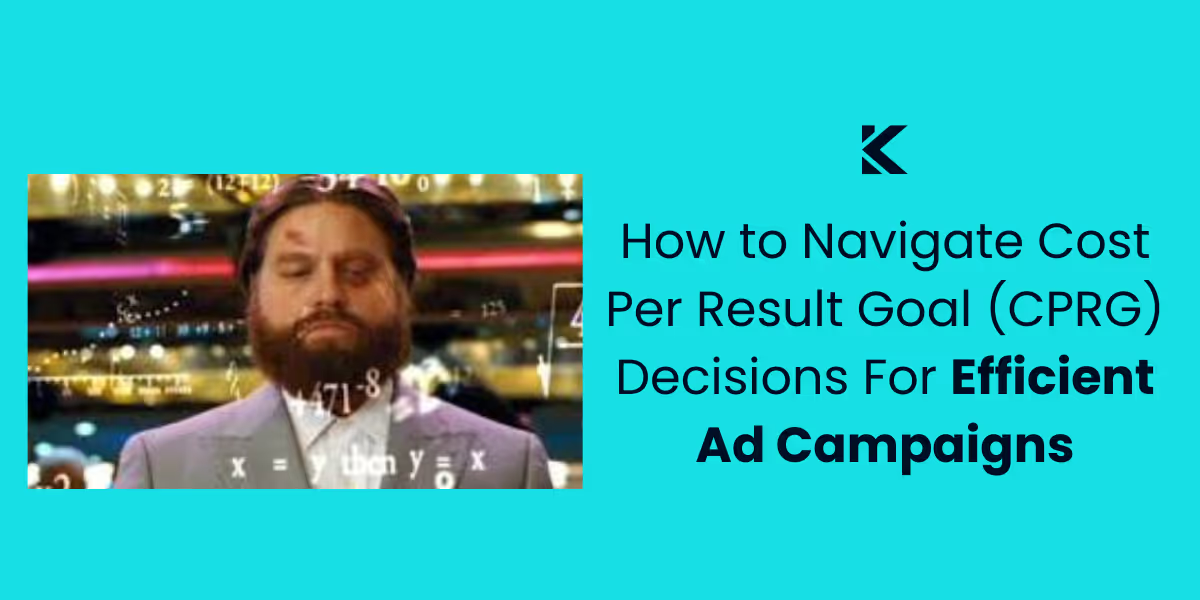
A Complete Guide on Cost Per Result Goal: Why You Should Use Them, When You Should Adjust Them & Everything in Between
Using cost per result goal (CPRG) is simple, but it’s not easy. Here, we’ll share how we work with cost caps and make strategic adjustments in our clients’ accounts.
Bi-weekly tips to reduce your CAC
Join thousands of DTC operators and subscribe to Cut the CAC for insights from the Bottom Line Podcast and Kynship's growth strategies.


.avif)
.avif)
.avif)



